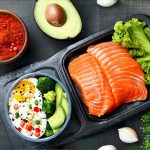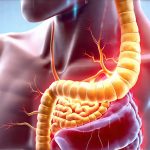Post-workout nutrition is often presented as this incredibly complex science involving precise timing and specific macronutrient ratios. While optimizing recovery is important, for many people, the biggest hurdle isn’t knowing what to eat – it’s being able to keep it down! Intense exercise can significantly alter digestive function, making individuals prone to nausea, bloating, cramping, or general abdominal discomfort after a workout. This is especially true for high-intensity activities like running, HIIT, or heavy weightlifting. The goal shouldn’t be perfection; it should be finding strategies that allow you to refuel without feeling miserable.
The digestive system takes a backseat during strenuous exercise as blood flow is diverted towards working muscles. This can lead to reduced gastric emptying (how quickly food moves from your stomach), decreased intestinal motility (the movement of food through the intestines) and even altered gut hormone regulation. When you then immediately try to consume a large meal, or foods that are difficult to digest, these pre-existing digestive challenges are exacerbated, resulting in unpleasant symptoms. Therefore, understanding how exercise impacts digestion is crucial for crafting a post-workout nutrition plan that’s both effective and tolerable. This article will explore strategies for minimizing nausea and discomfort while still supporting your recovery needs.
Understanding the Root Causes of Post-Workout Digestive Issues
The relationship between exercise and digestive upset isn’t one-size-fits-all, but there are common threads. The intensity and duration of your workout play a significant role. Longer or more intense sessions tend to cause greater disruption to gastrointestinal function. Dehydration is another major contributor – it slows down digestion and can lead to cramping. But beyond these factors, individual sensitivities come into play. Some people struggle with lactose, gluten, or FODMAPs (fermentable oligosaccharides, disaccharides, monosaccharides, and polyols) even without exercise, and those sensitivities are often amplified post-workout. Understanding recognizing food intolerances can be very helpful here.
Furthermore, the type of food you consume immediately before, during, and after exercise matters considerably. Highly processed foods, high-fat meals, and large volumes of fiber can all put extra strain on a system already compromised by physical exertion. It’s not just what you eat but how much and when. For example, chugging a protein shake immediately after sprinting might be more likely to cause issues than sipping it gradually over the next hour. Prioritizing easily digestible foods is key. You may also want to explore practical methods for identifying your specific food triggers.
Finally, stress levels contribute significantly. Exercise itself can be stressful on the body, and if you’re already stressed from other sources, your digestive system may be even more vulnerable. The gut-brain connection is strong – anxiety or tension can directly impact digestion. Therefore, incorporating strategies to manage stress alongside nutritional adjustments can provide substantial benefits. For those experiencing nausea during periods of rest, managing nausea may also be helpful.
Gentle Food Choices for Sensitive Systems
When aiming to avoid post-workout nausea, the focus should be on foods that are easy to digest and won’t overwhelm your system. This generally means prioritizing simple carbohydrates and lean proteins over complex carbs, fats, and fiber in the immediate post-exercise window (the first 30-60 minutes). Here are some excellent options:
- White rice – easily digestible carbohydrate source
- Bananas – provide potassium and easy sugars
- Applesauce – gentle on the stomach and provides carbohydrates
- Broth-based soups – hydrating and offer electrolytes
- Lean poultry or fish – sources of protein that aren’t overly fatty
- Rice cakes with a small amount of nut butter (if tolerated)
Avoid these foods immediately post-workout:
– Fatty meats like bacon or sausage
– Fried foods
– Large amounts of dairy (unless you know you tolerate it well)
– Cruciferous vegetables (broccoli, cauliflower, cabbage) – can cause gas and bloating
– High-fiber cereals or breads.
The goal isn’t to eliminate these foods forever; simply avoid them in the immediate post-workout period when your digestive system is most vulnerable. As your digestion normalizes, you can gradually reintroduce them. Listen to your body. If you suspect certain foods are causing issues, consider identifying food intolerances.
Hydration Strategies to Minimize Discomfort
Dehydration is a major culprit behind post-workout nausea and cramping. During exercise, you lose fluids through sweat, and replenishing those fluids is essential for both performance and digestive health. However, simply chugging a large amount of water immediately after a workout can sometimes exacerbate the problem. Instead, focus on consistent hydration throughout your workout and a gradual rehydration strategy afterward.
- Pre-hydrate: Drink 500-750ml of water in the hours leading up to exercise.
- During exercise: Sip small amounts of water every 15-20 minutes, especially during prolonged or intense activity.
- Post-exercise: Continue sipping water gradually over the next hour or two, rather than gulping it down all at once.
Consider electrolyte drinks or adding a pinch of sea salt to your water to help replenish lost minerals and improve fluid absorption. Coconut water is another excellent option as it naturally contains electrolytes. Avoid sugary sports drinks which can sometimes upset stomachs due to their high sugar content. Proper hydration supports optimal digestive function. You could also explore natural remedies for soothing digestion.
Timing & Portion Control: The Key to Tolerance
Even the most easily digestible foods can cause problems if consumed in large quantities or at the wrong time. As mentioned earlier, exercise disrupts digestion, so attempting to eat a substantial meal immediately after exertion is often a recipe for disaster. Instead, prioritize smaller, more frequent snacks or meals throughout the post-workout recovery period.
A good starting point is to consume a small snack within 30-60 minutes of finishing your workout. This could be something like a banana with a tablespoon of peanut butter or a small serving of rice and lean chicken. Then, have another more substantial meal 1-2 hours later, when your digestive system has had time to recover somewhat. Portion control is crucial.
Avoid eating anything for at least 30 minutes before exercise too – giving your stomach time to empty can help prevent discomfort during the workout itself and make post-exercise digestion easier. Experiment with different timings and portion sizes to find what works best for you. Some people tolerate food better immediately after a workout, while others need a longer recovery period before eating. If you’re an athlete, post-workout meal options can be particularly important.
Ultimately, finding the right post-workout nutrition strategy is about experimentation and self-awareness. Pay attention to how your body responds to different foods and timings, and don’t be afraid to adjust your approach accordingly. Remember that recovery isn’t just about refueling; it’s about feeling good while you do it.
Return the article with links inserted in Markdown format. Do not change structure or remove any content.


















